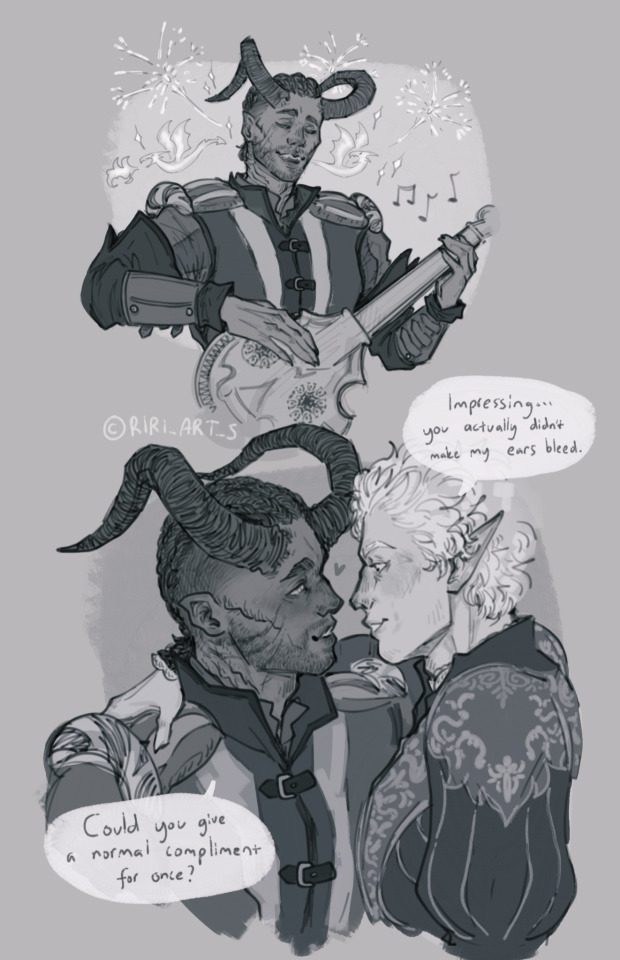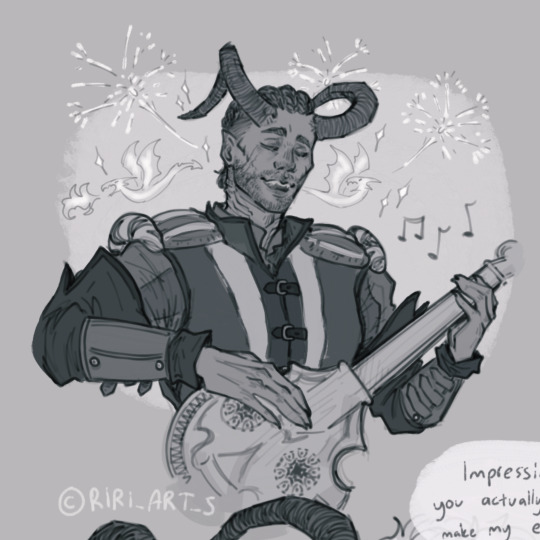vo, i like the games ■ main blog @ jackalopedread ■ 28 and they/them or ein/eir ■ icon by @wolfsskull!!!!!
Don't wanna be here? Send us removal request.
Text







scraps of a drawing dry spell
138 notes
·
View notes
Text

Big man, big log
#its log its log its big its heavy its wood#its log its log its better than bad its good#everyone loves a log ja its really fun#baldurs gate 3#baldurs gate#bg3
1K notes
·
View notes
Text

If Wyll was a bard he would definitely try to woo his partner with overly romantic songs


1K notes
·
View notes
Text

snake's aria 🐍
299 notes
·
View notes
Text

I finished just in time for the banner's release!!!
Hubert is out of no alt jail and that's the very reason I'm celebrating 😌
One of those roses has to be for Ferdinand and no one will change my mind 🧡
457 notes
·
View notes
Text

Hubert's damaged art for his Valentines Alt is kinda funny, it's like a Karen yelled at him for the wrong order and starts blasting Excalibur on him 😭
37 notes
·
View notes
Text

Day of Devotion Timeskip Claude would have been too powerful
501 notes
·
View notes
Text
Hubert’s new Biography for Day of Devotion, plus all of his new Chibis!






56 notes
·
View notes
Text
You're arranged married to one of the DA LIs, spin the wheel for who!!
5K notes
·
View notes
Text

Durge gets homeschooled.
7K notes
·
View notes
Text
spin this list of all of the pokemon. you are now that pokemon.
34K notes
·
View notes
Text









karlach & gale + 📚
#i think its important to know he specifically goes “[...] my personal library in waterdeep - *oooh*”#bg3#baldurs gate 3#baldurs gale
2K notes
·
View notes
Text
Ok, so you've been isekai'd to the dnd world and may or may not die due to the class you've been assigned. Better question. Are you human? (spinner wheel of all dnd5e species)
#look#sea elf is pretty good like. physicality wise#but i am DEEPLY AFRAID OF BODIES OF WATER#i dont FUCK with Lakes or Oceans or Even very large puddles#you will not find me on or near a bridge or boat#about to be the driest crustiest sea elf fucking off to the middle of a tundra goodbye sea#tabletop
27K notes
·
View notes
Note
Thoughts on the Bioware restructuration/lay-offs?
I've long said that any AAA game studio, no matter how strong, is always 2-3 flops in a row away from closure. Bioware did very well with Inquisition, but Mass Effect Andromeda and Anthem's sequential failures resulted in DA4 being their make-or-break release.

One factor was that 2024 was the first full year since 2012 that Bioware didn't have SWTOR on their books anymore - SWTOR went over to Broadsword in late 2023. For the past decade, all of the money earned by SWTOR (which is significant, the game isn't growing but it does more than earn its keep) was considered in Bioware's accounting. That sizable income helps offset the money being burned in other areas like ME:A, Anthem, ongoing DA4 efforts, and other internal projects (like the many failed KOTOR 3 pitches) to the accountants and executives. Without SWTOR to inject additional cash over the year, the Veilguard costs look a lot worse to the money people.

DA4 itself was a bit of a mess during development too. The development of the project that eventually became Veilguard was actually restarted at least twice - they were already working on preproduction for DA4 as of late 2015. The process was long and arduous, and the finished game was... mid? It wasn't underwhelming, it wasn't overwhelming, it was just... whelming. Veilguard also made the somewhat controversial choice to hang everything on sales and not go with post-launch DLC to help monetize further. This gamble really did not pay off. Veilguard missed its sales target by 50%, which was the third nail in the coffin. Each of these failures seems to follow the same pattern - significant dev time spent going in circles because the leadership can't commit to core elements of the game, resulting in something thrown together at the end in order to ship something.

As a result of these issues, the Sword of Damocles that dangles above every studio fell on Bioware. While Bioware remains as a label and the next Mass Effect game continues development, Bioware as a studio is no longer a stand-alone entity capable of building a full game from start to finish like it used to be. Bioware is likely no longer going to have as much of a cohesive identity like it used to - it will be a label more than anything else. If Mass Effect gets a green light for full production, they'll likely have to "borrow" a bunch of floating developers from EA's other studios to build it out, then disperse those borrowed devs to other EA projects once it ships and leave a small team to incubate the next "Bioware" project, at least until they can get two sequential big hits again and warrant a larger injection of funding to start growing again.

My heart really goes out to all of those who are affected by this - the Veilguard devs were really behind the 8 ball when they started and the current economic situation in video games isn't good. I hope that they're able to find something soon, hopefully at a studio that makes better high level leadership decisions.
[Join us on Discord] and/or [Support us on Patreon]
Got a burning question you want answered?
Short questions: Ask a Game Dev on Twitter
Short questions: Ask a Game Dev on BlueSky
Long questions: Ask a Game Dev on Tumblr
Frequent Questions: The FAQ
998 notes
·
View notes
Text
Surprise! Tumblr just got turned into an epic fantasy RPG, just like [your favorite appropriate media franchise]. And the Tumblr RPG's plot needs to have all of its characters covered, in roles both large and small.
That means that you are assigned to a stereotypical RPG role inside our new fantasy world. Spin this wheel to find out what you are now doing for a living.
48K notes
·
View notes
Text

Do you think Balduran and Ansur ever… um… while in dragon form…
2K notes
·
View notes
